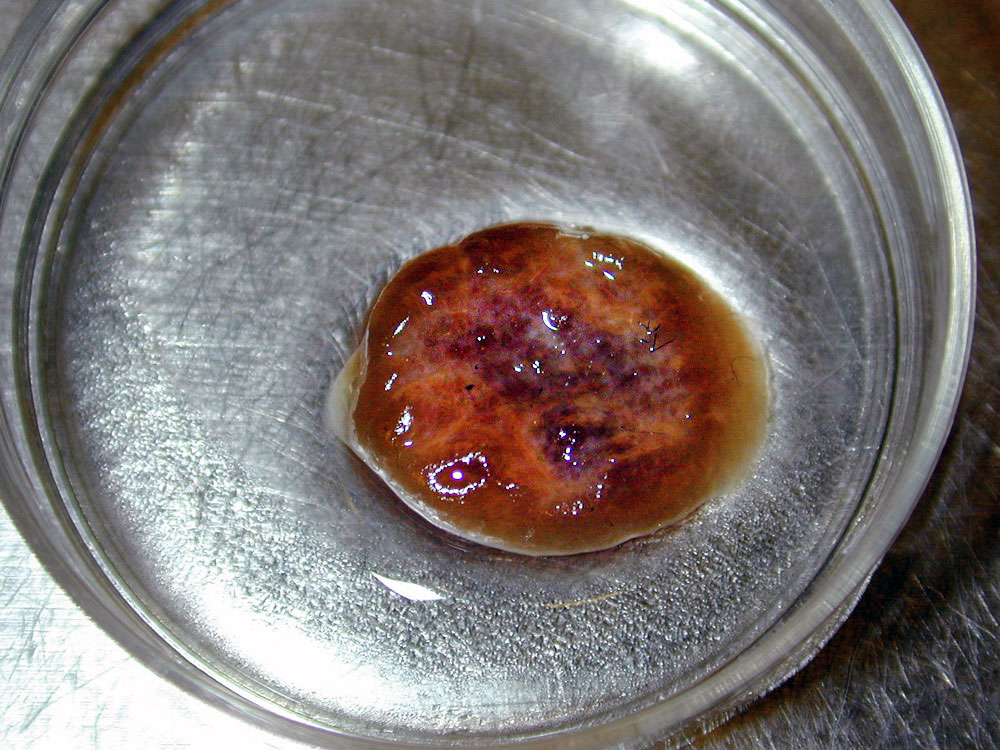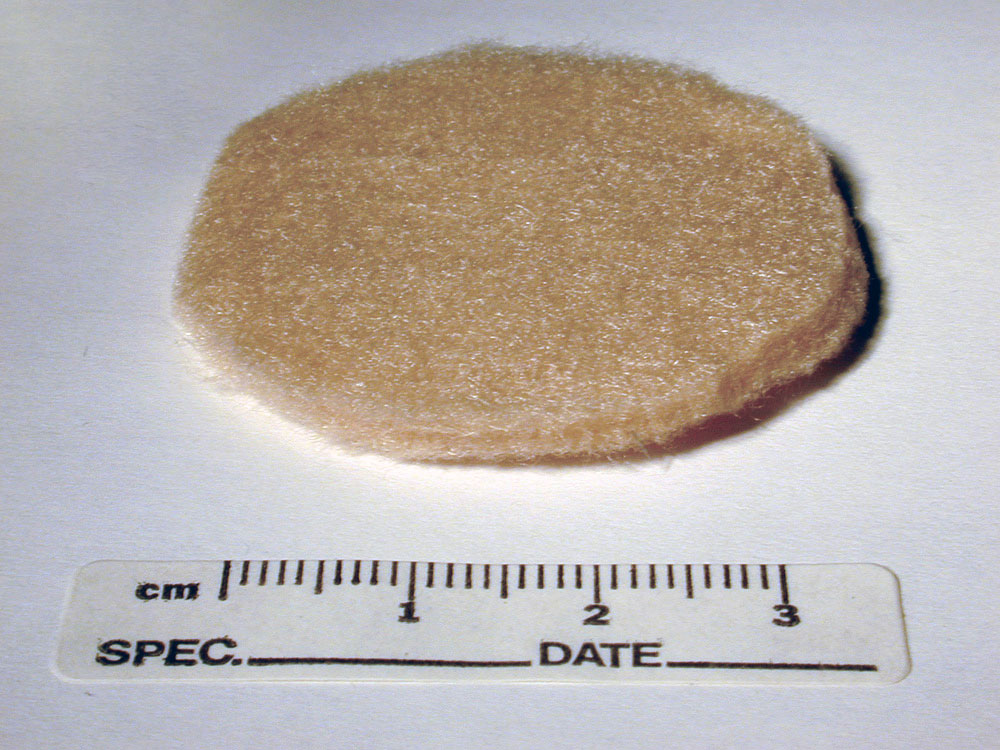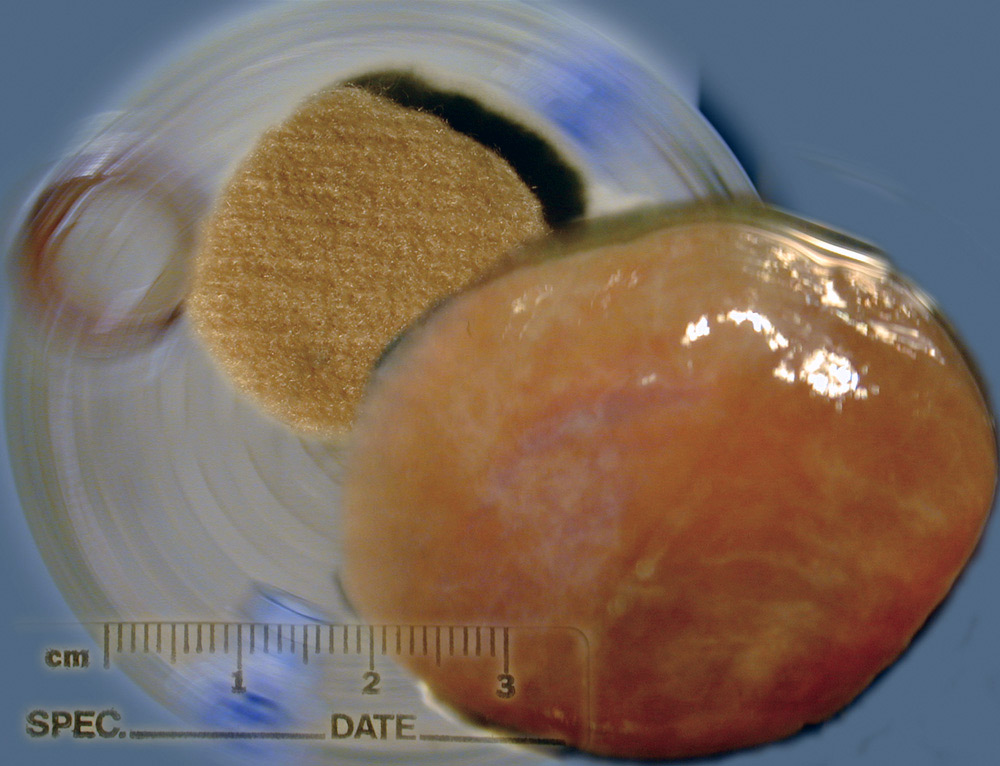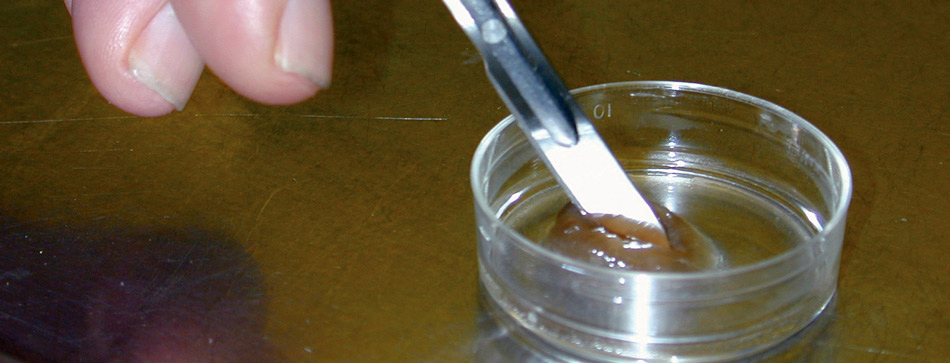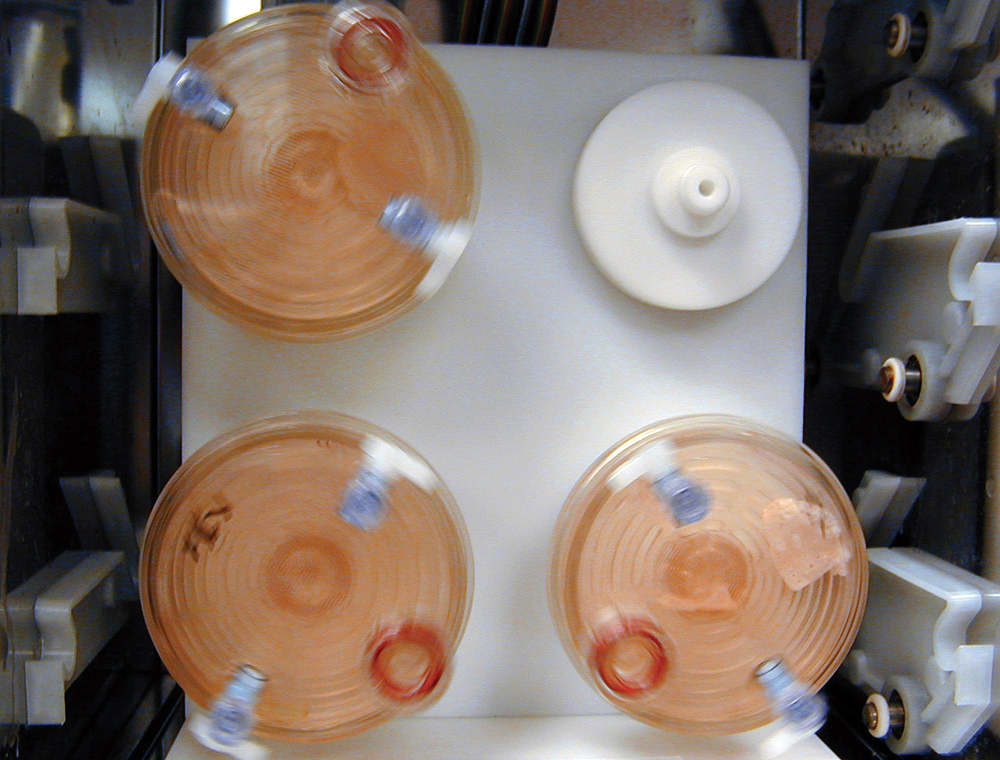Semi-living Steak
—
2000
Oron Catts & Ionat Zurr
The Semi-living Steak explores the implications of a near-future scenario in which lab-grown tissues is a source of food.
Advances in tissue engineering offers us the ability to grow, sustain and manipulate living tissues outside of the body. Currently this technology is used for scientific study, but in the near future it may be used for cultural purposes, specifically food.
In 2000, the first “steaks”, measuring 1cm in diameter, were composed of pre-natal skeletal muscles cells—cells taken from an unborn sheep—which were seeded on a degradable matrix. The “steaks” were incubated in a 3D tissue culture bioreactor and fed with fetal calf serum, a necessary nutrient for tissues grown in vitro. Considering the amount—and type—of materials used, specifically plastic and animal products, Semi-living Steak investigates, not only the use of lab-grown tissues for food, but also the ethical dilemmas that accompany this use.
—
The Semi-living Steak was the outcome of a residency at the Tissue Engineering & Organ Fabrication Laboratory at Harvard Medical School in 2000. To the knowledge of the TC&A Project, The Semi-living Steak is the first known proof-of-concept for using tissue culture exclusively for food.

